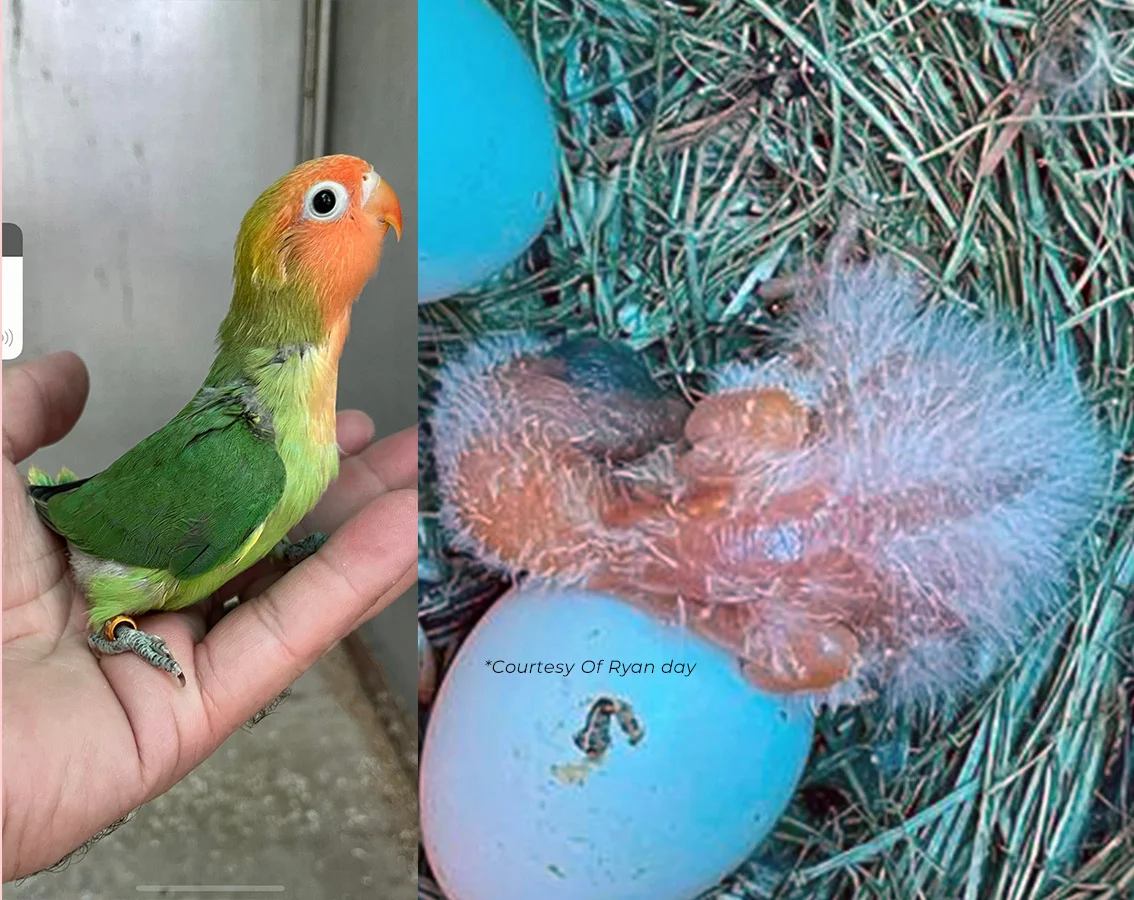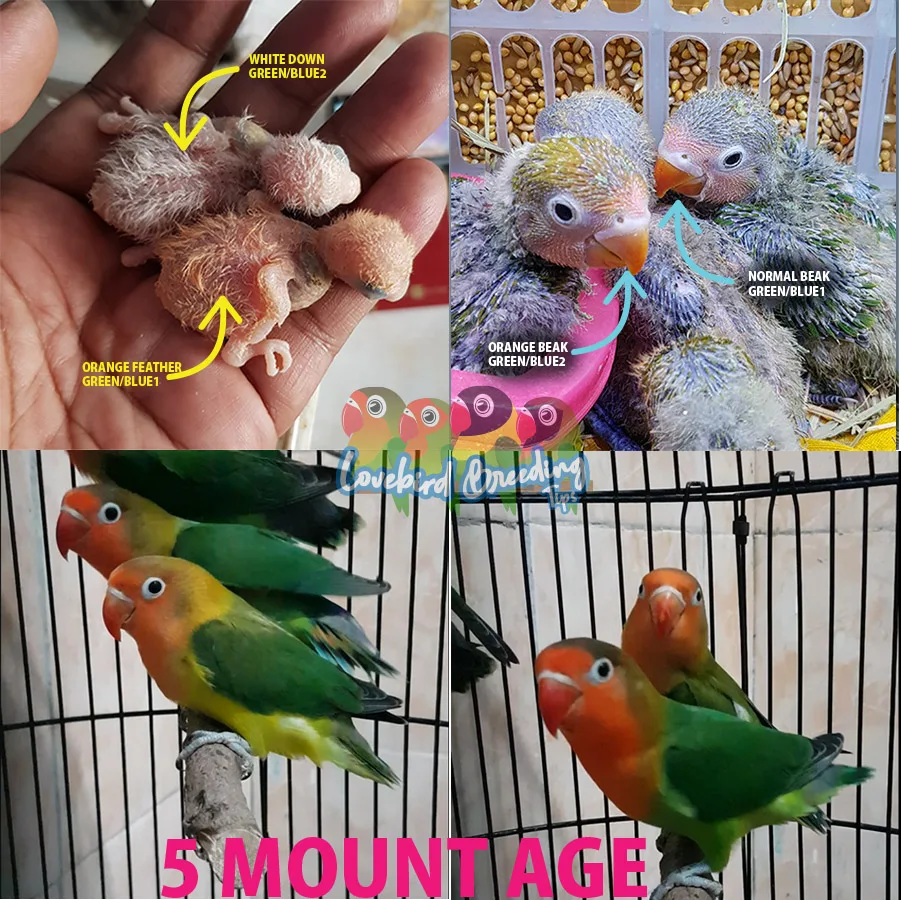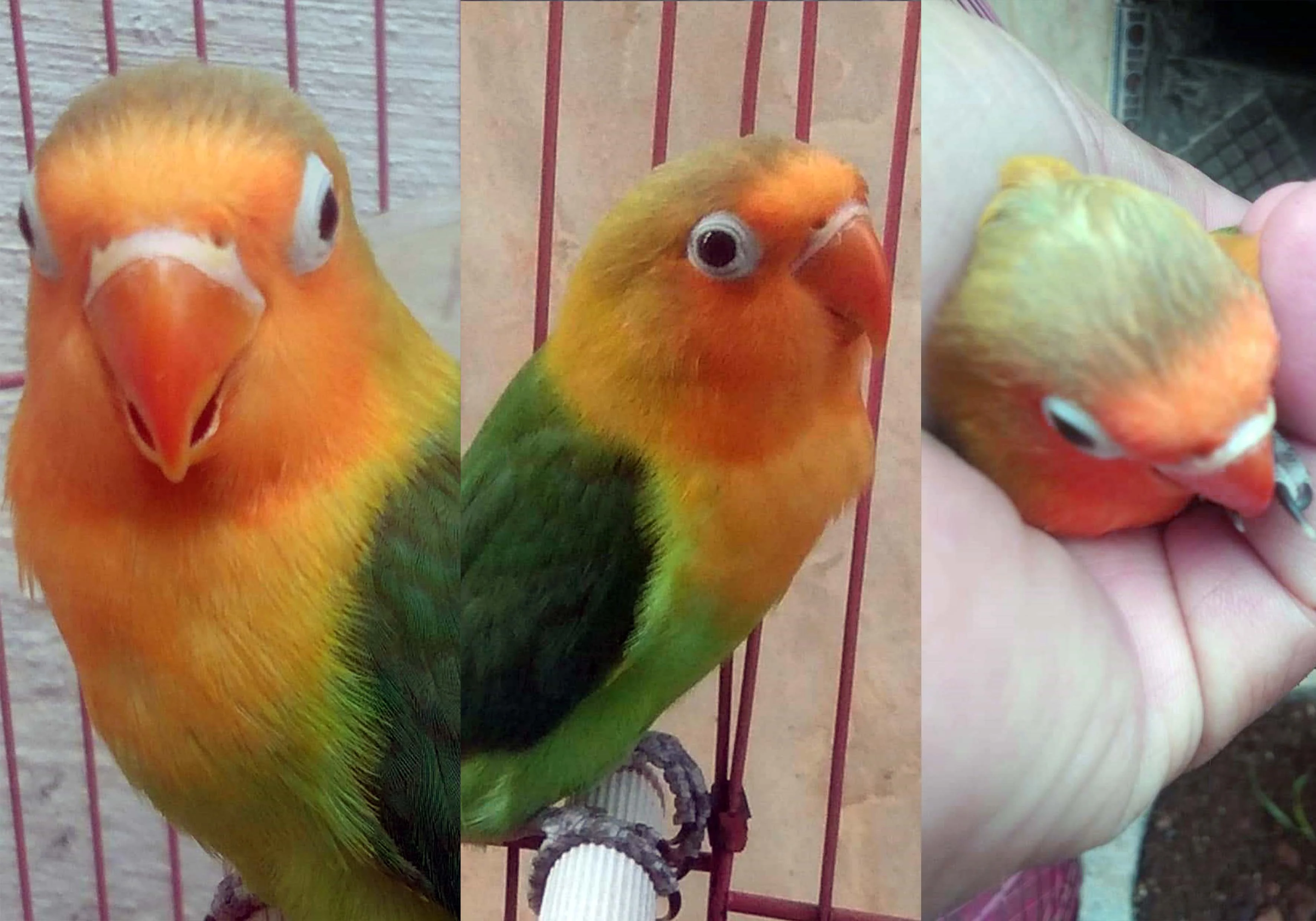Green split blue2 - Baer years, we have worked and called the mutation the wrong one, and we all thought the Parblue was a separate mutation in the blue allele.
Finally, Ornito, on his official website, uploaded an article that changed everything. American parblue changes to Blue1blue2 or B1b2.
Meanwhile, the bird we used to think of as Parblue, which could not produce Psittacine, changed to Blue2. Meanwhile, the Blue we know has changed its name to Blue1.
What is surprising is that Parblue is a combined allele crossing over between Blue1 & Blue2. It would be commonplace when it was just a name change.
But it gets tricky that the fact of the matter is it has to do with genetics. And recently, the term Blue2 appeared in the blue allele group. Between blue1 and blue2, there is no difference.
Background and characteristics of Agapornis blue2
Blue2 in Agapornis is obtained from crossing Blue1blue2 x blue1blue2. Or if you are still attached to the old term Parblue x Parblue.
Usually, this pair gets Blue1blue2 chicks, but they can produce Blue chicks in the field.

The chick with the Blue phenotype from the blue1blue2 x blue1blue2 cross is
not the blue1 or true Blue we used to know.
However, genetically, the blue phenotype chicks are blue2. Namely, birds with the Blue phenotype can
produce blue1blue2 parblue when crossed with blue1 or blue1blue2 parblue.
To prove blue1 or blue2, some people say we have to test breeding. It is
true. You should do a breeding test with blue1 crosses to see if they are
blue2. But what are the indications in Green birds with blue2 bloodlines?
Based on personal experience and data collection from various sources, the Green bird splits the blue2 can be known early if you notice.
Some of the explanations in this article allow you to recognize early Green/blue2 birds.
Green/blue2 white down feather

They are born with white down. There is a difference between Green/blue1
chicks and Green/blue2 chicks.
Green/blue1, when newly hatched,
have initial reddish feathers, probably almost the same as wild-type
chicks.
An example of a Green/blue2 Liliane Nyasa chick from Ryan
Day's senior breeder.While Green/blue2 has white initial down feathers.

They will look the same as the Blue series chicks in general. You would have
thought the chick would turn Blue when you saw the initial white feathers.
However,
they will become a series of Green when they grow up.
This is an
example of the difference between Green/blue1 and Green/blue2 in my Aviary.
Green/blue2 Mask's appearance

Green/blue2 Mask's appearance looks lighter. The difference is visible when the chicks have grown feathers in the mask area.
The orange color of the Green/blue2 mask tends to be brighter than the normal Green bird.

In some cases, you may find the Mask is completely yellow. But when they are
molting and change to adult feathers,
they will return with a
normal orange mask like the wild type or Green/blue1.
Green/blue2 beak color

The green/blue2 beak colour is also lighter. Normal Green or Green/blue1 has a red beak, as seen in the Green series.
But in Green/blue2, they have a lighter beak color; even in some cases, the beak will be orange to match the mask color.
This will also change when Green/blue2 is an adult. The beak will turn red like a Green series in general.
The data above can be proven in your Aviary.
Mark the chicks with
the phenotype as above and start the breeding test with a blue1 cross, and you
will find F1 blue1blue2.
Not all of the above conditions can be used as a 100% guarantee, but the identification above has been proven personally and by the source.
